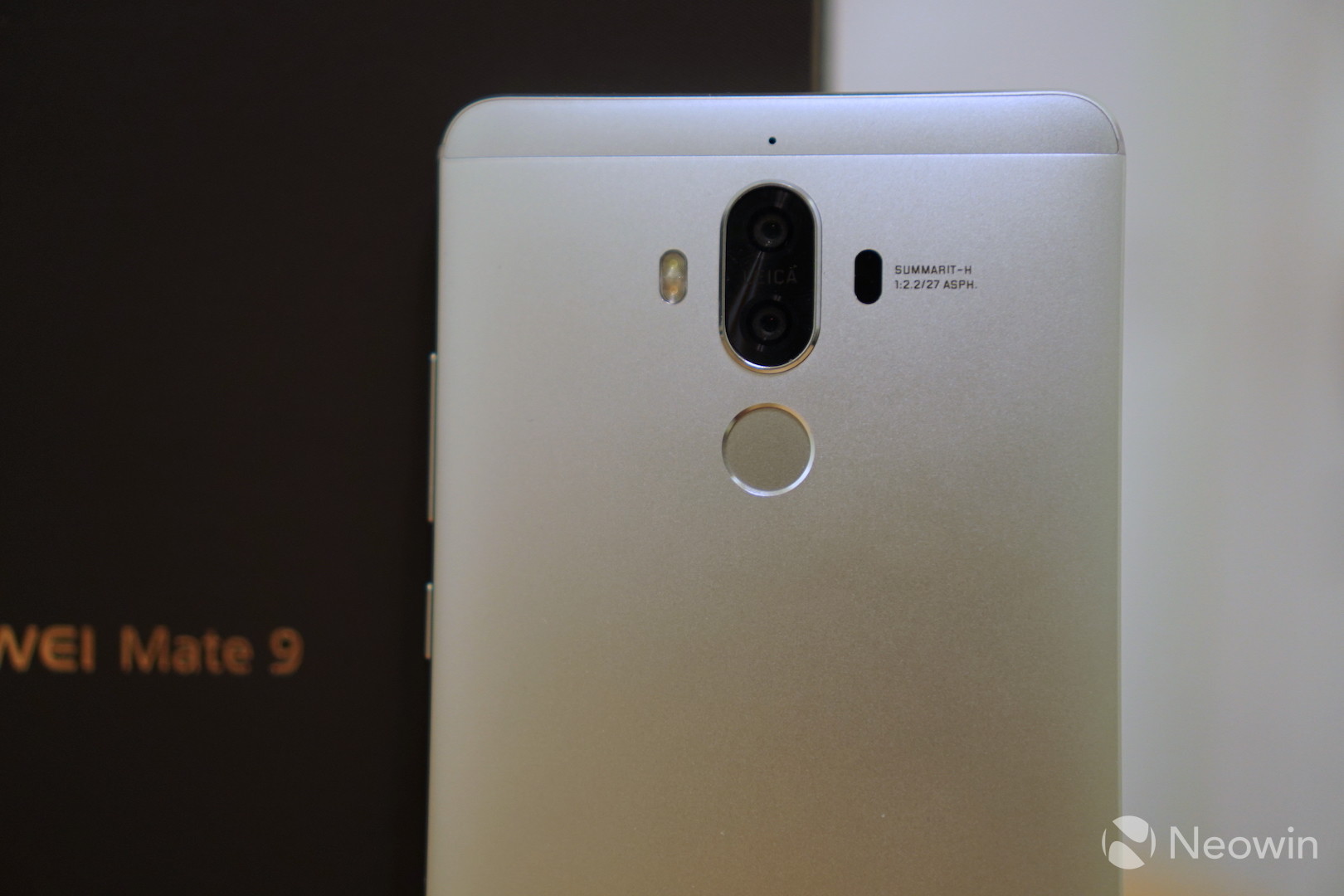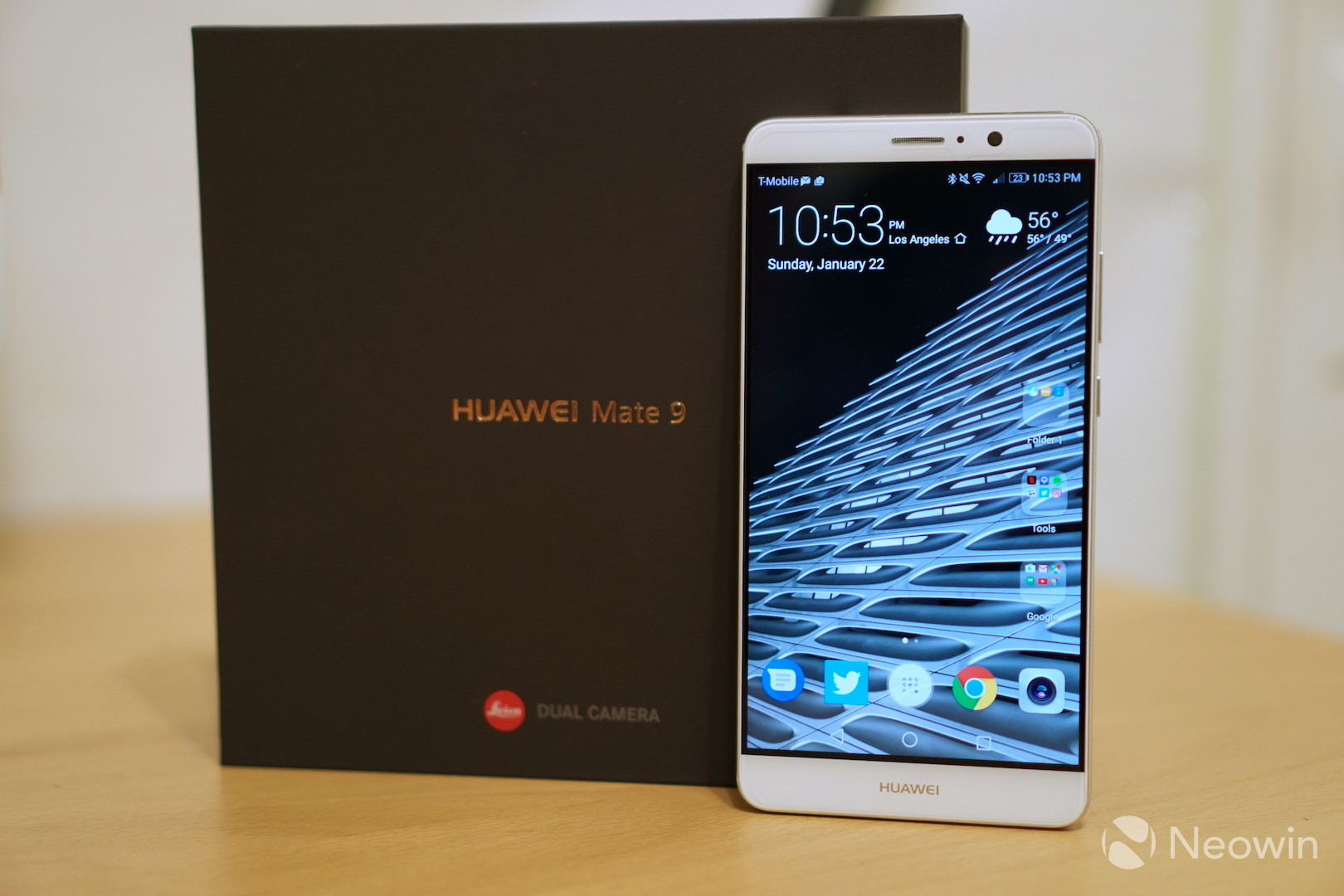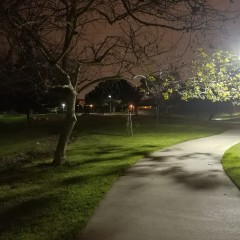Last year, Huawei debuted the Mate 8 at the start of the year and while it offered all of the right specifications and was beautifully crafted - it was just a little too big to be used as a daily device. After unveiling some wonderful handsets throughout the year, Huawei would close out the year by returning to the Mate line and offering a revised and improved successor, the Mate 9. It even upped the ante by offering a higher-end version with a curved display, the $1500 Porsche Design Mate 9.
Although the Mate 9 made its debut overseas a couple of months ago, it was only just announced for the United States earlier in the month at CES 2017. For the past couple of weeks, the Mate 9 has been put through its paces, being used day in and day out. While it performed well in its initial impression, how reliable was the handset and has Huawei made improvements to the Mate line that can propel it past its peers?
Specs
| Huawei Mate 9 | |
|---|---|
| Product Codes | MHA-L29 |
| Display | 5.9-inch 1080p 373ppi |
| Processor | HUAWEI Kirin 960, octa-core CPU (4 x 2.4GHz A73 + 4 x 1.8GHz A53) + i6 co-processor |
| Graphics | Mali-G71 MP8 |
| RAM | 4GB |
| Storage | 64GB with microSD slot expansion |
| Connectivity | Wi-Fi 2.4GHz/5GHz, 802.11a/b/g/n/ac with Wi-Fi Direct support Bluetooth 4.2, supports Bluetooth LE GPS/GLONASS/Galileo/BDS |
| Camera |
20MP Monochrome and 12MP RGB, f2.2 |
| Ports |
USB Type-C |
| Sensors |
Fingerprint sensor |
| Battery | 4,000mAh |
| Launch OS | Android 7.0 with EMUI 5.0 |
| Launch Date | November 2016 / January 2017 in the US |
| Size & Weight |
156.9mm x 78.9mm x 7.9mm |
| Price | $599.99 USD |
Design, Display, and Sound

A lot of companies have raised the bar when building a handset, using better materials and even pushing the boundaries when it comes to design. The Huawei Mate 9 isn’t the most complex looking handset, but it does boast a beautiful simple design and manages to stick a huge 5.9-inch display into a handset that’s roughly the same size as a Google Pixel XL and LG V20 - both of which offer smaller displays.

The display’s 2.5D curved edges taper off into the chamfered metal unibody making a seamless transition. The rounded back allows the phone to gently rest in the palm and makes it easier to hold. The rear houses the Leica dual lens camera that ever so slightly protrudes from the body as well as a fingerprint reader and other camera sensors.

On the bottom of the device, you get a USB Type-C port flanked by machined speaker grills. The top offers a 3.5mm headphone jack with IR port for remote control functionality. Lastly, there is the SIM card slot located on the left-hand side that can handle two Micro-SIMs or one Micro-SIM and a microSD memory card.
When you hear audio from a smartphone it usually isn't something to get excited about, but the Mate 9 offers an exceptional experience thanks to its dual speaker setup. While it might not have dual front-facing speakers embedded in the front face of the device, it does offer one downward firing speaker and utilizes the earpiece as another. When engaging the 'Stereo+' mode, the phone will automatically boost the audio volume of the earpiece when in landscape orientation, providing quite the audio experience. You can imagine my surprise when hearing this for the first time (last experience with dual speakers was with the HTC One M7), it is truly a different and welcome aural experience. The audio is crisp, full, and extremely loud (quite possibly one of the loudest handsets I have used to date).

So how does the 5.9-inch display look? It is actually quite crisp despite it not being a QHD display. It can handle the elements well, looking bright in outdoor settings and also offering excellent viewing angles. If there is one thing to complain about, it’s the fact that there is a little bit of yellow tinge on the bottom of the display. I don’t think this is a major issue as some devices come with this yellowish hue on the display due to the “curing” process not being complete. But, if you are worried, I would recommend exchanging your unit. After two weeks of use, it still remains, but I will update this review if the condition changes.

Software and Performance


Huawei has gotten a lot right with their devices over the years, but one of its prime detractors in the past has been its software. Luckily, with the Mate 9 running Android 7.0 with EMUI 5.0, things are a lot better.


While it is a fairly common to find a handset in Asia without an app drawer, those in other regions might find this a bit perplexing. Thankfully, Huawei has added an app drawer option natively in EMUI 5.0, which is a welcome change, especially considering the company's push into the US market.
The OS offers a "more is better" approach with a majority of the settings being customizable to the user's preference. Beyond the standard customization, Huawei has added in some interesting ones of its own, like the ability to log into two different accounts, from the same app, at the same time via a feature called 'App Twin'. There's also the added convenience of enabling "smart assistance" that allows users to better control the UI by offering a floating dock, motion controls, one-handed use, and more. Although there is a wide gamut of options available, the real key to success for EMUI 5.0 is in its organization. The settings menu is friendly and remarkably easy to navigate, something that has vastly improved over previous generations of EMUI.
As far as performance is concerned, the handset breezes through most, if not all tasks. During the two weeks of use, I never experienced a hang-up or stutter and this is most likely due to the Kirin 960 processor, 4GB RAM, and the highly touted “Machine Learning Algorithm” that optimizes the performance of the device. Per usual, benchmarks have been run and can be found in the images above and below.
Battery Life

This is where the handset stands out packing a whopping 4,000mAh battery which allows it to breeze through a day. It isn’t quite enough to get it through a complete second day during intensive use, but it’s nice knowing that if you forget to charge your handset overnight, you’ll still have a good amount of battery remaining for the next day. For those that use less intensive apps, it will be possible to get through two days on a single charge. As far as my daily use, I use Gmail, Snapchat, Twitter, Slack, Chrome, Spotify tethered via Bluetooth to a vehicle, shoot occasional photos and videos, and also make calls when necessary.

For those that need the most out of their phone, they will be happy to know that Huawei also has a power saving mode that can reduce the resolution of the display. It can also be customized to close apps when your device has been locked. And, for those that like to take it a step further, you can pop the Mate 9 into “Ultra” mode that will only allow certain apps to be accessible. While I have seen this mode on previous devices, the Mate 9 doesn’t really have many restrictions when it comes to apps - granting me access to Snapchat, Slack, Twitter, Google Maps, and more - all in full color. While it does cut off background updates, it’s still nice to be able to have access to a full suite of your apps and save an immense amount of battery at the same time. I haven’t had much time experimenting with this mode, but it estimates nearly triple the battery life compared to normal use, so this will be explored in a separate segment in the near future.
Camera
The camera is one of the more crucial aspects of a smartphone and since the debut of the P9 last year, Huawei has been pushing forward with its dual lens camera setup for its mid to high-end handsets. The Mate 9 offers a 20MP monochrome and a 12MP RGB camera with an aperture of f2.2. As you would expect from a top-end unit, the camera also offers optical image stabilization (OIS), a backside illuminated sensor, dual tone flash, phase detection, and laser auto focus.
During the day, the camera performs fairly well when taking images, offering great shots and the ability to focus quickly. It isn’t the fastest focusing system I have seen in a smartphone, but it still works pretty well and is reasonably accurate. For those that like to experiment, the camera packs a wealth of different modes and options, allowing you to tweak ISO, shutter speed, the focusing system, and more. There is a limitation when capturing 20MP images in that you will not be able to zoom, but this isn't a huge issue and is solved by knocking down the resolution to 12MP.
As mentioned previously, the Mate 9 offers a monochrome sensor similar to the P9. This has to be one of the most unexpected features of the device that I enjoyed during its use. While this might not sound like a huge deal, taking images in black and white, there’s a depth to the light and dark areas that creates an impressive image compared to its full-color counterpart. The ability to take advantage of the sensor and capture all of the subtle nuances of a scene is impressive and adds a new dynamic for anyone willing to pick up the Mate 9. It won’t be the most common way one shoots a photo, but it is a mode that is available and well worth exploring.
As for video, the camera isn't quite as good compared to still image performance. During my use, I found that the focusing system was a bit slow and it didn't always accurately capture a scene. There were instances where things in the foreground were a tad blurry or when panning from one subject to the next it would lose focus despite them being at the same distance. Again, this is probably something that can be corrected via software, but if you're a video person, you'll want to keep an eye on the footage or tap your subject to focus. While I'd like to say that this is the Mate 9's only issue when it comes to video, there's actually a much larger problem that manifests itself when trying to share your memories. If you are planning to offload any video from the Mate 9, be aware that 4K recordings are encoded using the h.265 codec. This means that you might struggle to get files uploaded to online services like YouTube and could face potential problems when trying to play these files on your computer or smart TV. The samples included above and below are the result of this issue, as we were not able to get 4K files to natively post to YouTube and have provided 1080p samples instead. If inclined, you can always convert the files to a friendlier format like h.264, but that's at your discretion and seems a bit much when you consider most other phones won't require this effort.
Overall, images shot during the day are crisp, with night shots looking a bit on the grainy side. You’re getting a quality that is almost on par with other high-end handsets, and although it isn’t the best in full auto, it gets the job done. If you find yourself wanting more from the camera, you can always take it into manual mode where you will be able to tweak all the key settings to help capture the perfect image. For more examples of photos, head to the end where I have added more images to the gallery.
Conclusion

The Huawei Mate 9 is the perfect for smartphone for someone who wants the most screen real estate in the smallest package. The handset isn’t the fanciest looking device, but its solid build and use of quality materials make it respectable. When it comes to features, the Mate 9 takes into consideration what’s important for a consumer and offers a superior set with its dual lens Leica camera, 4,000mAh battery, and 5.9-inch 1080p display. To make this device even more alluring, Huawei has priced it at $599.99 in the US, making it one of the more fairly priced flagship handsets on the market today.
With the launch of the Mate 9 in the US in January, questions may arise as to whether you should purchase this handset now or wait until next month to see what LG and even Huawei might have in store at Mobile World Congress. Judging by the rumors and leaks, it appears that this could be a monumental year for smartphones, with a majority of handset manufacturers apparently pushing the limit when it comes to design and performance.
The Mate 9 can be purchased from a variety of retailers that includes B&H Photo Video, Newegg, Best Buy, and more.



















_small.jpg)







25 Comments - Add comment